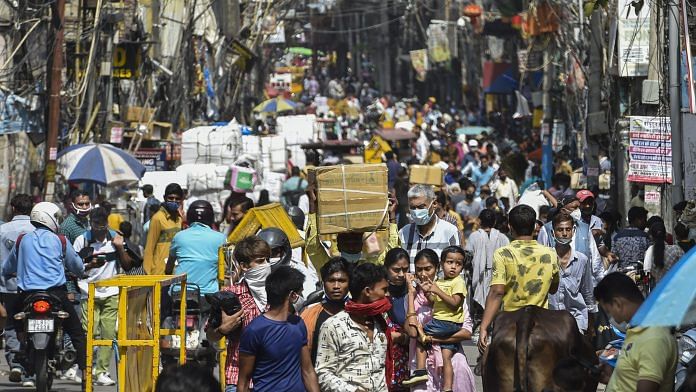New Delhi: With India overtaking China as the most populous country in the world, Finance Minister Nirmala Sitharaman Thursday announced that the Union government will be setting up a high-powered committee to deliberate on the challenges arising from fast population growth and the demographic changes the country is witnessing.
“The committee will be mandated to make recommendations for addressing these challenges comprehensively in relation to the goal of ‘Viksit Bharat’,” the finance minister said in her interim budget 2024 speech. ‘Viksit Bharat 2047’ is the Narendra Modi government’s initiative to make India a developed nation by 2047.
According to the United Nations Population Fund’s (UNFPA’s) State of World Population (SOWP) report released in April last year, India is the most populous country in the world with a total population of 1,428.6 million, overtaking China that has a population of 1,425.7 million. In November 2022, the UN announced that the world’s population had surpassed 8 billion.
The SOWP report noted that the population doubling time or the amount of time it takes for a population to double in size stood at 75 years for India. Further, it added that 25 percent of the population in India is aged 0–14 years, 18 percent population is aged 10–19 years, 26 percent population is aged 10-24 years, and 68 percent population falls in the 15-64 years of age.
About 7 percent of the population is 65 years or older, it said.
India established the first national programme to control population growth through family planning in 1952, the report said, adding that while this achieved limited success in slowing birth rates, it also resulted in instances of excessive and even forced sterilisation. “…it would take until the early 1990s for leaders to shift from a target-driven family planning programme to one based on women’s health and rights,” it said.
In 1956, China, too, adopted a policy to regulate population growth “for the protection of women and children, better educating and rearing offspring and bringing about national prosperity”, the report said.
“The notion that high population growth would impede development eventually culminated in the one-child policy in 1980 (Jackson, 2012),” it said, adding that the percentage of the elderly population in that country is projected to double to over 20 percent of the total population by 2050.
According to the United Nations Population Fund’s (UNFPA) report titled ‘India Ageing Report 2023’, released last September last year, there were 149 million people aged 60 years and above in 2022 (as on 1 July), comprising around 10.5 percent of the country’s population. By 2050, this will double to 20.8 percent, with the absolute number at 347 million.
“This unprecedented rise in the ageing population will have significant implications for health, economy, and society in India. Preparing for the anticipated increase in the number of older persons and having the right policies and programmes for the well-being of the current and future older generations is one of the immediate priorities of the government and other relevant stakeholders,” that report said.
(Edited by Uttara Ramaswamy)
Also Read: India gets the ‘highest population’ tag. But its young can counter burden by being productive



